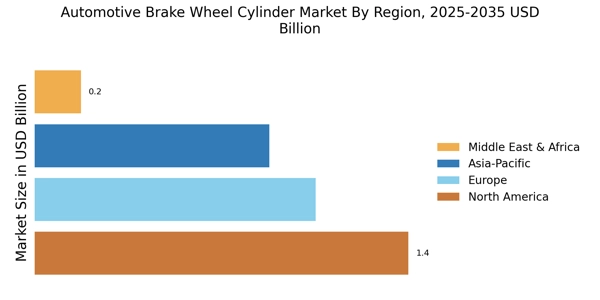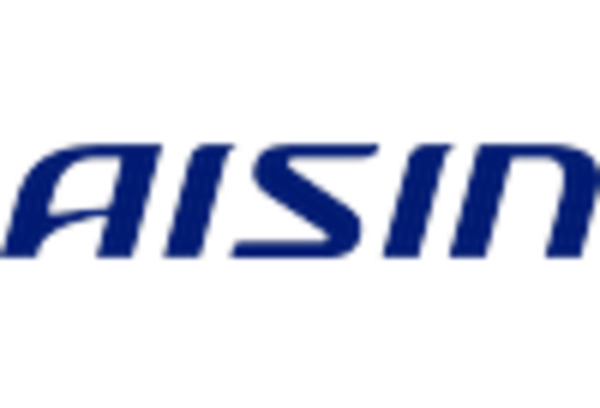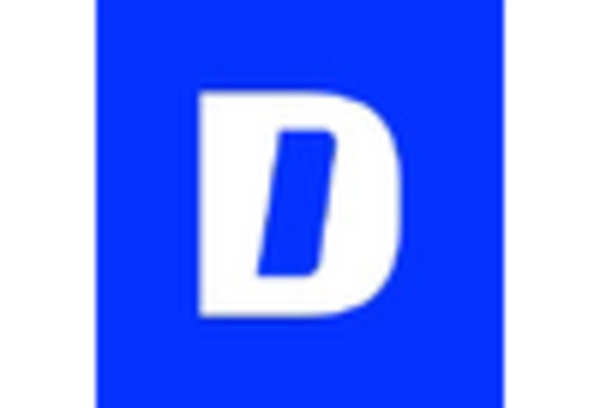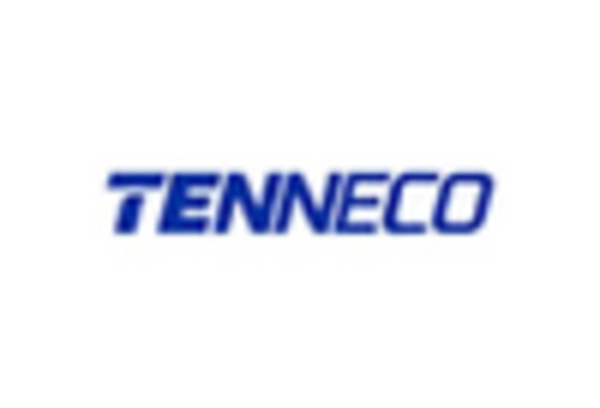Growth of Aftermarket Services
The Automotive Brake Wheel Cylinder Market is also witnessing growth in aftermarket services, which play a crucial role in maintaining vehicle safety and performance. As vehicles age, the need for replacement parts, including brake wheel cylinders, becomes more pronounced. The aftermarket segment is projected to grow at a CAGR of around 4% over the next five years, driven by an increasing number of vehicles on the road and a growing awareness of vehicle maintenance. This trend suggests that consumers are more inclined to invest in quality replacement parts to ensure optimal braking performance. As a result, the Automotive Brake Wheel Cylinder Market stands to gain from the expanding aftermarket services, which emphasize the importance of safety and reliability in vehicle operation.
Rising Vehicle Production and Sales
The Automotive Brake Wheel Cylinder Market is positively influenced by the rising production and sales of vehicles across various segments. As economies recover and consumer confidence improves, the demand for new vehicles is on the rise. According to recent statistics, vehicle production is expected to reach approximately 100 million units annually by 2026, which directly correlates with the need for reliable braking systems. This increase in vehicle output necessitates a corresponding rise in the demand for brake components, including wheel cylinders. Consequently, manufacturers in the Automotive Brake Wheel Cylinder Market are likely to benefit from this upward trend, as they strive to meet the growing requirements of the automotive sector.
Regulatory Compliance and Safety Standards
The Automotive Brake Wheel Cylinder Market is significantly impacted by stringent regulatory compliance and safety standards imposed by governments worldwide. These regulations mandate that vehicles meet specific safety criteria, which includes the performance of braking systems. As a result, manufacturers are compelled to enhance the quality and reliability of their brake components, including wheel cylinders. The increasing focus on safety has led to innovations in design and materials, ensuring that products meet or exceed regulatory requirements. This trend is likely to drive demand for high-performance brake wheel cylinders, as automakers seek to comply with evolving safety standards. Consequently, the Automotive Brake Wheel Cylinder Market is expected to experience growth as manufacturers adapt to these regulatory pressures.
Shift Towards Electric and Hybrid Vehicles
The Automotive Brake Wheel Cylinder Market is undergoing a transformation due to the shift towards electric and hybrid vehicles. As these vehicles become more prevalent, there is a growing need for specialized braking systems that cater to their unique requirements. Electric vehicles often utilize regenerative braking systems, which may necessitate modifications in traditional brake components, including wheel cylinders. This shift presents both challenges and opportunities for manufacturers in the Automotive Brake Wheel Cylinder Market. As the market for electric and hybrid vehicles expands, it is anticipated that the demand for innovative brake solutions will increase, prompting manufacturers to invest in research and development to meet these new demands.
Technological Innovations in Brake Systems
The Automotive Brake Wheel Cylinder Market is experiencing a surge in technological innovations that enhance braking performance and safety. Advanced materials and manufacturing techniques are being developed, leading to lighter and more durable brake components. For instance, the integration of electronic brake systems is becoming more prevalent, allowing for improved responsiveness and control. This trend is supported by data indicating that The Automotive Brake Wheel Cylinder Market is projected to grow significantly, with a compound annual growth rate (CAGR) of around 5% over the next few years. As manufacturers invest in research and development, the demand for high-quality brake wheel cylinders is likely to increase, driving growth in the Automotive Brake Wheel Cylinder Market.


















Leave a Comment